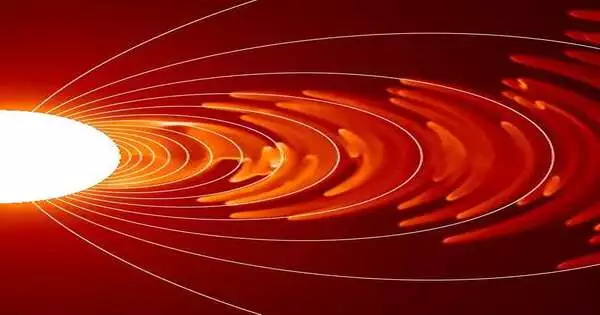Researchers from the European Southern Observatory (ESO), the Leibniz Institute for Astrophysics Potsdam (AIP), and the Massachusetts Institute of Technology (MIT) Kavli Institute and Department of Physics have found that magnetic fields are much more frequent than previously believed to exist in multiple star systems with at least one giant, hot blue star. The findings vastly increase our understanding of massive stars and their function as the origin of supernova explosions. The results have been released in the astronomical journal Monthly Notices of the Royal Astronomical Society.
With masses greater than 18 times that of the sun, blue, so-called O-type stars are among the most massive in the universe. Four of the 90 brightest stars that are visible from Earth fall into this category, despite the fact that they are uncommon, extremely hot, and luminous. They are extremely significant because they fuel physical processes that are energetic and have an impact on the structure of entire galaxies, as well as chemically enrich the space between the stars. These stars are usually found in areas of active star formation, like the spiral arms of a galaxy, or in galaxies that are colliding or merging. Such powerful stars are particularly interesting for magnetic studies because they explode as supernovae and leave behind a compact object, like a neutron star or a black hole, as a byproduct.
“Surprisingly, the data revealed a relatively high occurrence rate of magnetism in these various systems. Only three of the 36 systems analyzed did not show any trace of a magnetic field, while 22 of the 36 systems studied did.”
Dr. Silva Järvinen from AIP’s Stellar Physics and Exoplanets section.
Two gravitationally bound star systems that orbit one another are called binaries. A compact object binary could develop in this system if both components are O-type stars. Black holes are the final resting place of extremely massive stars, whereas O-type stars, which are less massive, “die” as neutron stars during a supernova. Two neutron stars, a neutron star and a black hole, or two black holes are possible outcomes of binaries. Gravitational-wave detectors can see the orbital decay of these objects due to the emission of gravitational waves.
Stellar winds, an energetic stream of charged particles, are present in massive stars like the sun. The magnetosphere is a structure that can be formed when these plasma winds react to magnetic fields. The Earth has a magnetosphere, as do all stars and planets with magnetic fields. It shields Earth from cosmic radiation that is energetic. Extreme centrifugal forces are exerted on the plasma, which can move at speeds of thousands of kilometers per second. It has been suggested that this magnetic mechanism may be responsible for the tightly bundled explosion of massive stars, which is important for long-duration gamma-ray bursts, X-ray flashes, and other supernova features.
Only eleven O-type stars have been found to contain magnetic fields over the years, despite the fact that a theoretical explanation for how magnetic fields affect supernovae or long-duration gamma-ray bursts was put forth decades ago. With the exception of one star, they were all either single stars or wide binaries. This was a very perplexing fact because earlier research had demonstrated that more than 90% of O-type stars form in multiple systems with two or more stars. Since they could not interpret some of the observed physical characteristics of numerous systems without taking into account the effect of a magnetic field, many theorists have been perplexed by the relatively low number of magnetic fields detected in massive stars.
The authors used historical spectropolarimetric observations of stellar systems with at least one O-type component to conduct a magnetic survey in order to explain this discrepancy. By measuring the polarization of the light, spectropolarimetry can determine whether a star has a magnetic field. They made use of data from the high-resolution spectropolarimeters ESPaDOnS at the Canada-France-Hawaii telescope on Mauna Kea and HARPS at the ESO 3-point 6-meter telescope on La Silla, Chile. They created a unique, complex method for measuring the magnetic field in order to analyze the data.
“To our surprise, the results revealed that magnetism occurs frequently in these various systems.” Only three of the 36 studied systems did not exhibit any evidence of a magnetic field, according to Dr. Silva Järvinen from the AIP’s Stellar Physics and Exoplanets section.
The large number of systems with magnetic components is mysterious, but it likely means that the fact that these stars were born in binaries played a crucial role in the generation of magnetic fields in massive stars through interaction between the system components, such as mass transfer between two of the stars or even a merging event of two stars. According to Dr. Swetlana Hubrig, this work is also the first observational confirmation of the previously proposed theoretical theory for how a star’s magnetic field affects its death, allowing it to explode more quickly and energetically.
More information: S Hubrig et al, Are magnetic fields universal in O-type multiple systems?, Monthly Notices of the Royal Astronomical Society (2023). DOI: 10.1093/mnras/stad730





